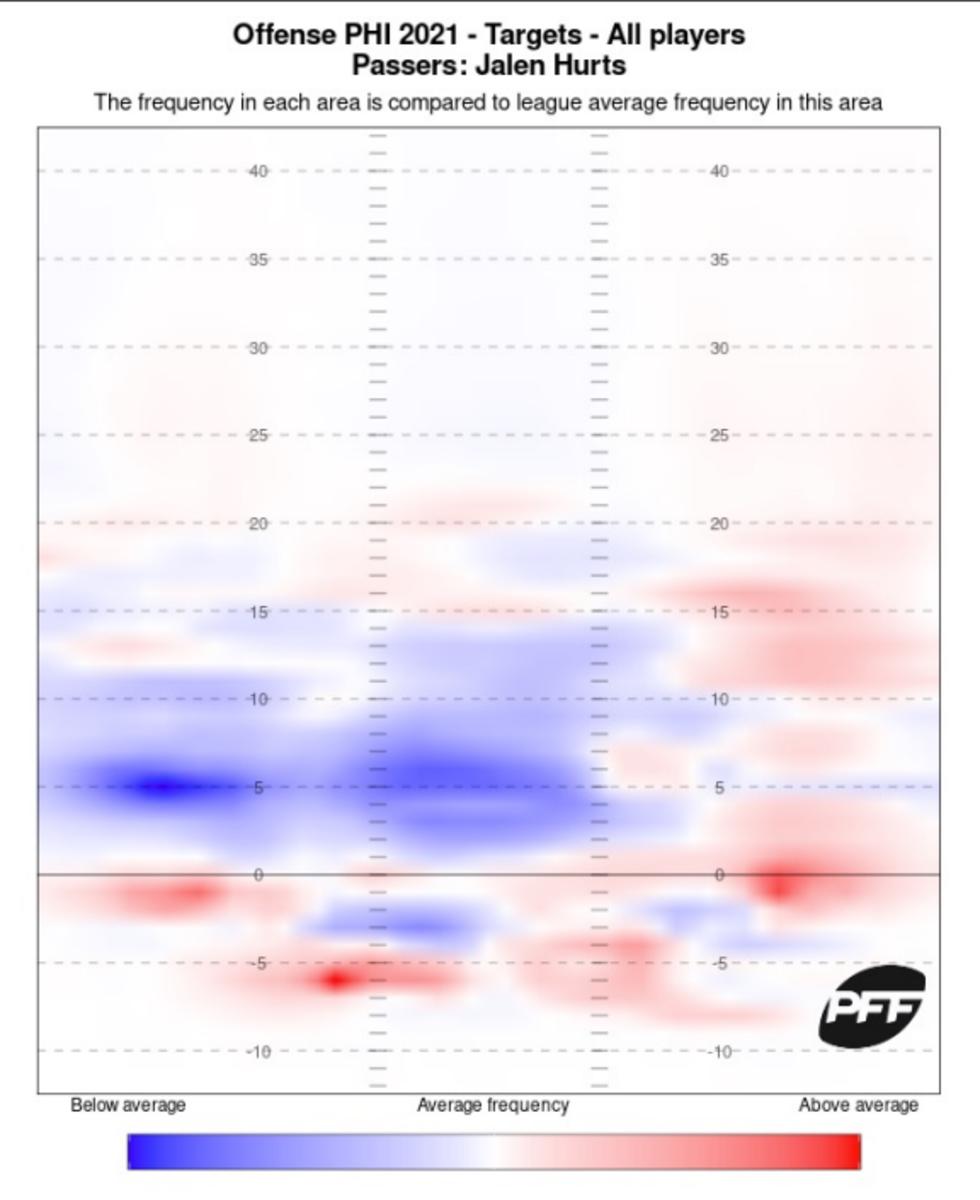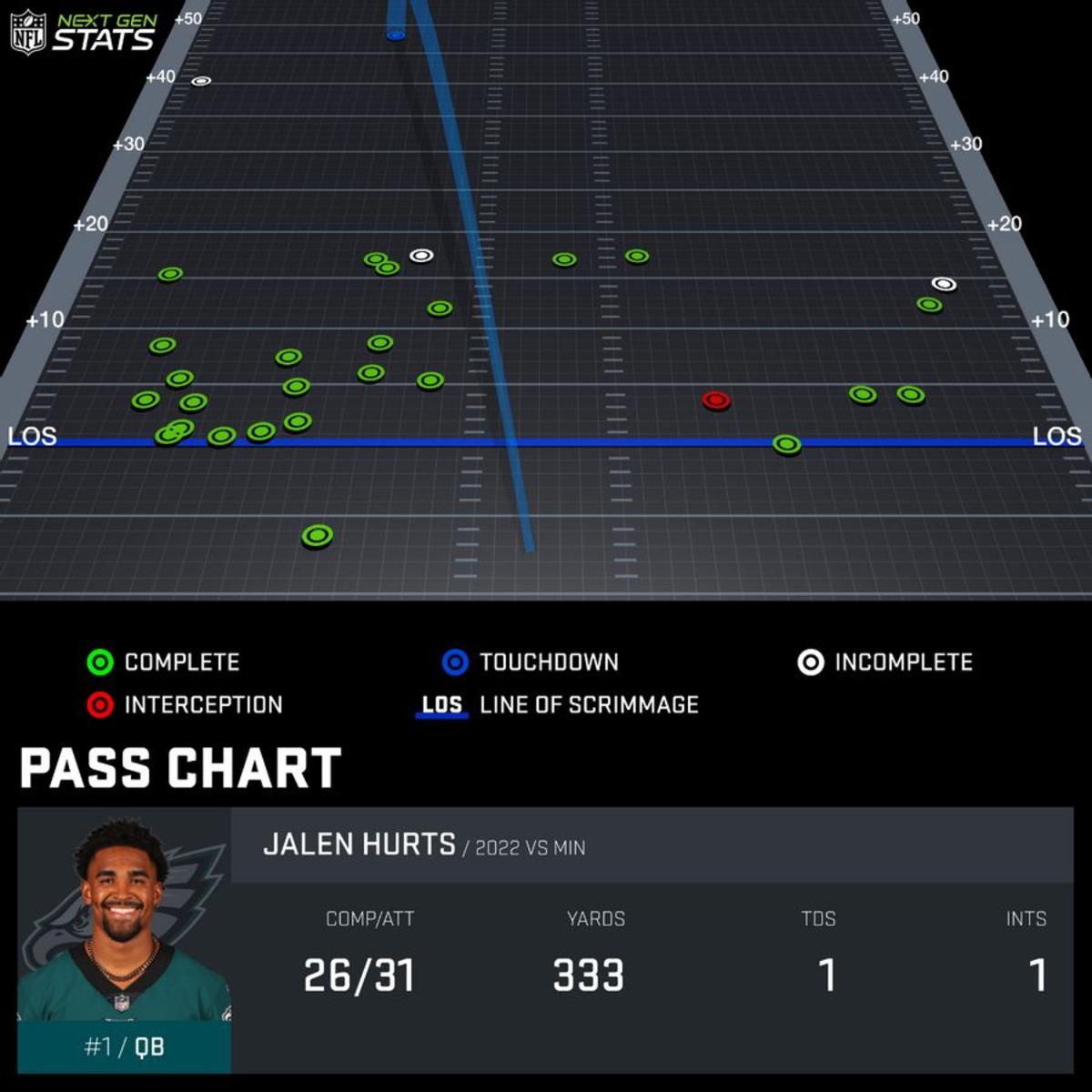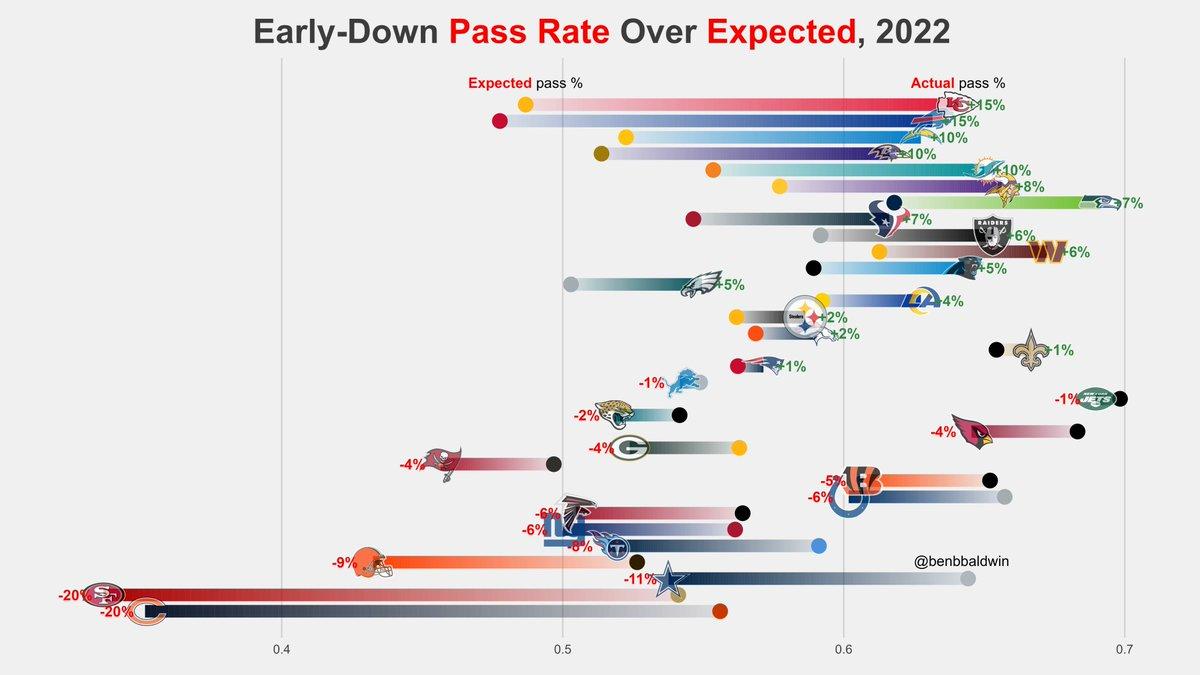What can we learn from the numbers behind the Vikings' loss to the Eagles?

Let’s make this clear: The 2022 Minnesota Vikings are not as bad as they showed on Monday night against the Philadelphia Eagles. They are also nowhere close to the consistently dominant team they showed flashes of becoming in Week 1 after beating the Green Bay Packers.
As always, the truth lies somewhere in between.
For a Vikings team that has embodied the middle going on several years now, that is no surprise. Given the relative lack of personnel changes, what else was expected? Every year that Kirk Cousins has been in Minnesota the team is bound for a couple of clunkers. For fans, it doesn’t make it less frustrating.
The question now lies in whether Kevin O’Connell can limit the frequency and course correct fast enough.
To answer that without seeing another game, let’s take a deeper look at some of the Vikings’ deficiencies on Monday night and how much is correctable versus a reality that requires getting used to.
Kirk Cousins’ performance under pressure
Regression can come in both negative and positive ways. On the positive side, the Vikings are likely not going to have four drops every game (most in the NFL in Week 2). The next time Irv Smith Jr. has an opportunity to catch the ball down the sideline for a touchdown, he likely will. Similarly, Justin Jefferson is unlikely to stop running a route in the end zone and lead to an interception. Those factors will likely regress positively for the Vikings.
An area for the Vikings that negatively regressed on Sunday and is likely to continue in some form or fashion is Kirk Cousins’ performance under pressure.
Let’s compare his numbers under pressure in Weeks 1 and 2.
Week 1
14 dropbacks under pressure
7-of-13 for 136 yards, 1 touchdown and 0 interceptions
1 sack
116.2 QB rating
84.6 PFF grade
0 turnover worthy plays
1 big-time throw
Week 2
16 dropbacks under pressure
5-of-13 for 37 yards, 1 touchdown and 2 interceptions
2 sacks
32.7 QB rating
44.2 PFF grade
3 turnover worthy plays
1 big-time throw
Interestingly enough, the Eagles generated pressure less frequently than the Packers did. Cousins was under pressure on 32 percent of his dropbacks against the Eagles compared to 42 percent against the Packers, per PFF. The Eagles' pressure was just more effective.
Cousins' efficiency dropped dramatically. He generated less than three yards per pass attempt and he looked much less decisive. In the Week 1 win, Cousins looked like he always knew where the ball was going to go, whether he was under pressure or not. That was not the case Monday. He threw several passes up for grabs when the pressure was getting to him, showcased by the three turnover-worthy plays.
That doesn’t mean this performance is the norm either. But it’s much more shaded to his Week 2 performance than Week 1. Over the full 2021 season, Cousins was pressured on 33.7 percent of dropbacks. His completion percentage was 45.9 percent and he threw 8 touchdowns to 2 interceptions. He had a 72.5 QB rating and a 52.1 grade.
The one exception is Cousins’ performance when blitzed.
Over his career, these are his PFF grades when blitzed.
2021 - 90.9
2020 - 59.4
2019 - 84.8
2018 - 77.1
Other than 2020, Cousins has been an above-average, sometimes elite quarterback when defenses send more than four. On Monday, he had a 25.7 PFF grade when blitzed. He was 4-of-12 in those situations for 22 yards.
It remains up for debate whether the struggles against the blitz were schematic failures or just an extraordinary performance from the Eagles' defense. Either way, Cousins and O’Connell will need to find answers when the defense turns the heat up on them.
The Jalen Hurts gameplan
The Vikings had a front-row seat to Jalen Hurts’ coming-out party. The third-year quarterback diced up Minnesota for the entirety of the first half, which was enough to hold off the Vikings’ floundering offense.
Hurts completed 26-of-31 passes for 333 yards, one touchdown and one interception. He also ran for 57 yards and two touchdowns.
The Vikings’ game plan seemed pretty clear, drop back in coverage and force Hurts to beat you with his arm. Hurts did just that.
Underdog Fantasy’s Josh Norris pointed this out. Take a look at these two images. First is a heat map of Hurts’ throws from 2021, per PFF.

Lots of underneath throws and up the right sideline, but hardly anything up the middle or to the left.
Now look at this Next Gen Stats passing chart of Hurts against the Vikings.

Hurts bucked his 2021 trends and was completely willing to throw past the line of scrimmage, both up the seam and along the sideline on the left. The Vikings were willing to give it to him too, playing mostly off-coverage. Hurts completed 18-of-19 passes within 0-10 yards of the line of scrimmage.
This also meant the Vikings hardly blitzed at all, surely fearing his ability to scramble. Minnesota sent the blitz on only five of Hurts’ dropbacks (13.2 percent of total dropbacks). Through two weeks, that’s a characteristic of the Ed Donatell defense. He blitzed Aaron Rodgers four times in Week 1 (10.5 percent of dropbacks).
While just a small sample size, Hurts was much less effective when Minnesota blitzed. His PFF grade was 59.5 when blitzed, as opposed to 91.8 when he wasn’t. His completion percentage dropped from 88.5 to 60 percent. His yards per attempt fell from 11.7 to 5.8. His QB rating dropped from 128.2 to 36.7 and he didn’t scramble on any of the dropbacks. He finished 3-of-5 for 29 yards and an interception (albeit one that wasn’t his fault) in those situations. Yet the Vikings barely utilized the blitz
It’s a stark game plan shift from how the Lions played Hurts in Week 1. Detroit blitzed the Eagles QB on 50 percent of dropbacks. And, just like against Minnesota, his numbers dropped. His yards per attempt were cut in half, his completion percentage dropped and his QB rating went from 95.6 to 65.6 when blitzed. Hurts’ PFF grade was 67.7 when blitzed and 90.0 when he wasn’t.
It raises the question, should Minnesota have blitzed more? Personnel certainly factors into it and the Vikings’ secondary has looked shaky. Yet Detroit’s secondary isn’t much better.
In ESPN’s preseason position rankings, Minnesota’s cornerback group was ranked 25th, and Detroit’s was 30th. At safety, the Vikings ranked 15th. Detroit ranked 26th.
Maybe Donatell believed they didn’t need to blitz to generate pressure, but they created pressure on only 23.7 percent of dropbacks. If the Vikings continue to stay away from the blitz, it will require the defensive line to generate much more pressure than they did in Week 2.
The Eagles’ Justin Jefferson strategy
Jefferson had nowhere near the impact in Week 2 that he did in the season opener against Green Bay. The Eagles devoted more attention to the star receiver and did something that the Packers didn’t, they put their best cornerback on him.
Darius Slay was the coverage defender on six of Jefferson’s 12 targets. Jefferson caught one of those passes for seven yards. Slay had two interceptions and another pass breakup when the Vikings targeted Jefferson. Slay had an 87.8 coverage grade when defending Jefferson.
Contrast that with the Packers’ Jaire Alexander, who was hardly ever lined up against Jefferson and was only targeted once all game. In that Packers game, six of Jefferson’s 10 targets came on safeties or linebackers. Against the Eagles, only three of his 12 targets were against non-cornerbacks.
In critical situations, the Eagles were also much more willing to play man coverage on Jefferson. The Eagles played man coverage on roughly 27 percent of the Vikings’ dropbacks, nearly double the rate the Packers did in Week 1. Cousins went 3-for-12 on those dropbacks against man coverage for 38 yards.
The abandonment of the run game
The Vikings dropped back to pass 50 times against the Eagles. They had nine designed runs. Dalvin Cook had just six rushes for 17 yards. Even for the most pass-heavy team that’s not a split you see often. The game script played a big role in that. The Vikings ran the ball on 1st-and-10 on each of their first two drives, for a total of three yards. Suddenly they were down by several scores and the running game became an afterthought.
But even accounting for the game script, Minnesota passed more than expected and it’s the second week in a row that has been the case. Here’s a good look at it from Ben Baldwin.

The dots represent each team’s expected pass rate. For the Vikings, it’s been around 57 percent of plays. However, they’ve thrown the ball much closer to 65 percent of the time. That eight percent difference is the sixth-highest in the league behind the Chiefs, Bills, Chargers, Ravens and Dolphins. Now, that isn’t exactly bad company to keep for the Vikings’ offense.
But so much of what worked for Minnesota in Week 1 was predicated on their ability to run the ball or at least the opponent’s fear that the Vikings could run the ball. It’s why the Packers stayed in heavier personnel and allowed Jefferson to get matchups against Quay Walker and Preston Smith.
Without any threat of running, defenses can pin their ears back and fly at the quarterback. O’Connell tried several screens to offset that but was unsuccessful on those plays as the Vikings generated only 1.2 yards per screen on Monday.
In turn, all the pressure fell on Cousins and he couldn’t convert.
